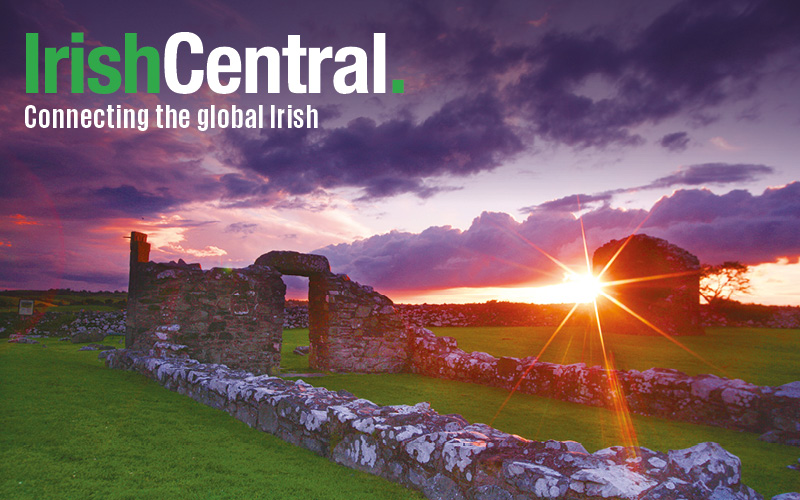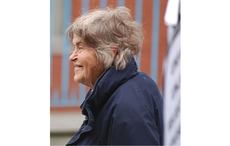A damning 2012 report by the Irish government’s Health Service Executive (HSE) found that an Irish Catholic mother and child home had a baby mortality rate of 68% in 1943.
It has also been suggested that the high rate of infant mortality was caused by the falsification of death records to allow for children to be adopted domestically, and to couples abroad, without the knowledge of the Irish public.
For many years, Bessborough Mother and Baby Home, in Co. Cork, run by the Sisters of the Sacred Hearts of Jesus and Mary, was an institution where pregnant and unmarried women were referred to in order to deal with their “problem.”
Many of these women have since spoken out about their treatment while staying at the home, revealing the inhumane manner in which women were denied pain relief during labor, basic medical care following childbirth and were forced to complete humiliating tasks such as cut the lawns with scissors while spending years within the institution.
Last year, a report by the Irish Examiner revealed the high mortality rates that were discovered in Bessborough in 1943. After this discovery, women were no longer sent to the home.
Under the Freedom of Information Act, the Irish Examiner has now gained access to a previously unpublished HSE report carried out in 2012 which investigated the institution’s own records. The investigation shows evidence of “institutionalization and human trafficking,” where “women and babies were considered little more than a commodity for trade amongst religious orders.”
The Bessborough report outlines from the start the shocking manner in which the women in residence within their walls, and their children, were treated as commodities by the religious order and regarded as as a way for them to make money.
The home’s records, handed over to the HSE in 2011, reveal that the order was receiving money from the women themselves for the care of their children and was also receiving payments from the children’s adoptive parents.
The report reads: “The only written confirmation of monies being paid were detailed within the ‘Catholic Women’s Aid Society Book 2, 1929-40.’ Even a cursory glance at these pages reveals that monies were paid by natural mothers for the care of their babies, while adoptive parents were charged a sum ranging between £50-£60, payable on a monthly payment scheme in exchange for their adopted child. Further investigation into these practices is warranted.”
Records show a strong preoccupation with wealth and with the accumulation of wealth for the order in particular. The wealth of those couples looking to adopt was high on the list of concerns taken into consideration when deciding if they would receive a child.
Speaking of the adoption process within the home, the report states: “While an explicit criteria for adoption at Bessborough could not be located within any materials available during this research, it would appear from the board of management meeting minutes that prospective adoptive parents were assessed on the basis of their earnings, the size and condition of their home, and their social status within the community (not to mention the fundamental expectation that couples were practicing Catholics), age, years married, and the committee’s ‘impression’ were mentioned most often as deciding factors [in] whether the couple would be ‘passed’ and ‘given a baby’ or not.”
The report also reveals the true extent of baby mortality rates at the home, with 478 infant deaths recorded over 19 years. This amounts to a shocking 25 deaths a year, in comparison to 23 deaths a year at the infamous Tuam Mother and Baby home in Co. Galway.
In an astounding claim, the report suggests that the high number of deaths at the home may, in fact, have been falsified in order to allow the further accumulation of wealth through “clandestine adoption arrangements, both foreign and domestic.”
If the report’s claim is true, it notes, this could “have dire implications for the Church and State.”
“Simply put the State had a social problem that it desperately needed to make go away, while the Church had the power and control to turn the ‘problem’ of illegitimacy into a lucrative money making enterprise,” the report states.
“While it is beyond the expertise of this author to proffer grand narratives about the historical, fiscal, or social arrangements forged between Church and State, the records themselves expose a telling indictment of what may have been one of Ireland’s most damning and destructive partnership of collusion, corruption, and abuse between Church and State.”
The report also criticizes the manner in which the women themselves were treated in a society that regarded unmarried pregnant women as little more than criminals.
The report reads: “While it is noted that entrants to Bessborough were not subject to the sanctions of any Irish court order, however their ‘voluntary’ admissions appear to have been a punitive reprise, far worse than a prison term.”
Furthermore, women remained institutionalized long after childbirth and long past a suitable time within which they should have been discharged.
“Society at large did not question the legitimacy of the Sacred Heart Order’s alleged powers of detainment; many of the women were kept there long past their delivery dates. It would appear that freedom to leave in one’s own time was beyond the reach of many women,” it continues.
One account tells of a young girl sent to Bessborough despite no evidence of her being pregnant. It is believed that the girl had been “led astray by a man” and so she was locked up due to “the prevailing morality of the times which sanctioned the incarceration of young females in an effort to prevent their moral degeneration.”
The Sisters of the Sacred Hearts of Jesus and Mary who ran the Bessborough Mother and Baby Home have released a statement denying any knowledge of the HSE report.
“We are in contact with the commission in regard to the mother and baby homes inquiry, which will be having our full co-operation. For the present, as is appropriate, we will be dealing directly with the commission on all related matters,” it read.




Comments